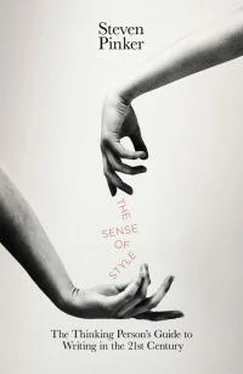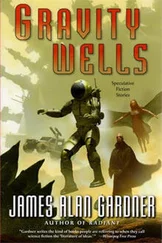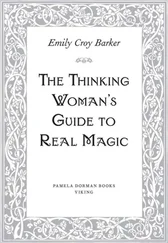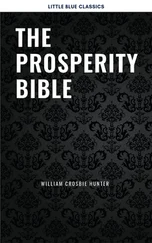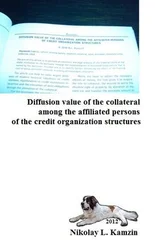These problems with the employment of criminals as combatants have historically led to efforts to recruit ordinary men as combatants—people who, unlike criminals and thugs, commit violence at no other time in their lives. …
The result has been the development of disciplined warfare in which men primarily inflict violence not for fun and profit but because their training and indoctrination have instilled in them a need to follow orders; to observe a carefully contrived and tendentious code of honor; to seek glory and reputation in combat; to love, honor, or fear their officers; to believe in a cause; to fear the shame, humiliation, or costs of surrender; or, in particular, to be loyal to, and to deserve the loyalty of, their fellow combatants. 31
There’s no mistaking what the themes of Mueller’s discussion are; he tells us in so many words. One of them he calls criminal warfare, and he then explores it in five consecutive paragraphs. He starts by reminding us what a criminal is, and explaining how criminal warfare works. The next two paragraphs elaborate on each of the ways in which criminal armies may form, and the two after that explain the two problems that criminal armies pose for their leaders, one problem per paragraph. These problems naturally lead Mueller to his second theme, disciplined warfare, and he explains that theme in the two consecutive paragraphs.
The discussion of each theme coheres not just because it is localized in a string of consecutive paragraphs but because it refers to the theme using a set of transparently related terms. In one thematic string we have terms like criminals, criminal warfare, crime, fun, profit, gangs, mafias, thugs, mercenaries, troublemakers, preys on the weak, executioners, violence, desertion, flight, whim, opportunity, and run. In the other we have ordinary men, training, indoctrination, honor, glory, reputation, shame, loyalty, code, and believe in a cause. We don’t have to puzzle over what the words in each cluster have to do with one another, as we did for Keegan’s Clausewitz, culture, states, policy, Enlightenment, political animal, criminal justice, monotheistic religions, Aristotle, and so on. The threads that connect them are obvious.
The thematic coherence in Mueller’s exposition is a happy consequence of his use of classic style, particularly the imperative to show rather than tell. As soon as we see the thugs preying on little old ladies and fleeing when the cops show up, we appreciate how an army composed of such men would operate. We also see how the leader of a modern state would seek a more reliable way to deploy muscle to advance its interests, namely by developing a well-trained modern army. We can even understand how, for these modern states, war can become the continuation of policy by other means.
In all of my previous examples of bad writing I picked on easy marks: deadline-pressured journalists, stuffy academics, corporate hacks, the occasional inexperienced student. How could a seasoned author like John Keegan, a man who shows frequent flashes of writerly flair, serve as a model of incoherent writing, comparing badly with a guy who sells birdseed on Cape Cod? Part of the answer is that male readers will put up with a lot in a book called A History of Warfare. But most of the problem comes from the very expertise that made Keegan so qualified to write his books. Immersed as he was in the study of war, he became a victim of professional narcissism, and was apt to confuse the History of Warfare with the History of a Man in My Field Who Gets Quoted a Lot about Warfare. And after a lifetime of scholarship he was so laden with erudition that his ideas came avalanching down faster than he could organize them.
There is a big difference between a coherent passage of writing and a flaunting of one’s erudition, a running journal of one’s thoughts, or a published version of one’s notes. A coherent text is a designed object: an ordered tree of sections within sections, crisscrossed by arcs that track topics, points, actors, and themes, and held together by connectors that tie one proposition to the next. Like other designed objects, it comes about not by accident but by drafting a blueprint, attending to details, and maintaining a sense of harmony and balance.

Chapter 6
Telling Right from Wrong
HOW TO MAKE SENSE OF THE RULES OF CORRECT GRAMMAR, WORD CHOICE, AND PUNCTUATION
Many people have strong opinions on the quality of language today. They write books and articles deploring it, fire off letters to the editor, and call in to radio talk shows with their criticisms and complaints. I have found that few of these objections single out clarity or grace or coherence. Their concern is correct usage —rules of proper English such as these:
The word less may not be used for countable items, as in the sign over the supermarket express lane which restricts customers to TEN ITEMS OR LESS ; the sign should read TEN ITEMS OR FEWER.
A modifier may not contain a dangling participle, such as Lying in bed, everything seemed so different, where the implicit subject of the participle lying ( I ) is different from the subject of the main clause ( everything ).
The verb aggravate does not mean “annoy”; it means “make worse.”
The purists who call out these errors see them as symptomatic of a decline in the quality of communication and reasoning in our culture today. As one columnist put it, “I’m concerned about a country that’s not quite sure what it’s saying and doesn’t seem to care.”
It’s not hard to see how these worries arose. There is a kind of writer who makes issues of usage impossible to ignore. These writers are incurious about the logic and history of the English language and the ways in which it has been used by its exemplary stylists. They have a tin ear for its nuances of meaning and emphasis. Too lazy to crack open a dictionary, they are led by gut feeling and intuition rather than attention to careful scholarship. For these writers, language is not a vehicle for clarity and grace but a way to signal their membership in a social clique.
Who are these writers? You might think I’m referring to Twittering teenagers or Facebooking freshmen. But the writers I have in mind are the purists—also known as sticklers, pedants, peevers, snobs, snoots, nitpickers, traditionalists, language police, usage nannies, grammar Nazis, and the Gotcha! Gang. In their zeal to purify usage and safeguard the language, they have made it difficult to think clearly about felicity in expression and have muddied the task of explaining the art of writing.
The goal of this chapter is to allow you to reason your way to avoiding the major errors of grammar, word choice, and punctuation. In announcing this goal shortly after making fun of the language police, I might seem to be contradicting myself. If this is your reaction, you are a victim of the confusion sown by the sticklers. The idea that there are exactly two approaches to usage—all the traditional rules must be followed, or else anything goes—is the sticklers’ founding myth. The first step in mastering usage is to understand why the myth is wrong.
The myth goes like this:
Once upon a time, people cared about using language properly. They consulted dictionaries to look up correct information about word meanings and grammatical constructions. The makers of these dictionaries were Prescriptivists: they prescribed correct usage. Prescriptivists uphold standards of excellence and a respect for the best of our civilization, and are a bulwark against relativism, vulgar populism, and the dumbing down of literate culture.
Читать дальше
